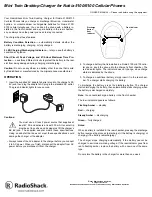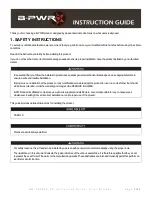
2000 Sep 06
6
Philips Semiconductors
Magnetoresistive sensors for
magnetic field measurement
General
Flipping
The internal magnetization of the sensor strips has two
stable positions. So, if for any reason the sensor is
influenced by a powerful magnetic field opposing the
internal aligning field, the magnetization may flip from one
position to the other, and the strips become magnetized in
the opposite direction (from, for example, the ‘+x’ to the
‘
−
x’ direction). As demonstrated in Fig.6, this can lead to
drastic changes in sensor characteristics.
The field (e.g. ‘
−
H
x
’) needed to flip the sensor
magnetization, and hence the characteristic, depends on
the magnitude of the transverse field ‘H
y
’: the greater the
field ‘H
y
’, the smaller the field ‘
−
H
x
’. This follows naturally,
since the greater the field ‘H
y
’, the closer the
magnetization's rotation approaches 90
°
, and hence the
easier it will be to flip it into a corresponding stable position
in the ‘
−
x’ direction.
Looking at the curve in Fig.7 where H
y
= 0.5 kA/m, for
such a low transverse field the sensor characteristic is
stable for all positive values of H
x
and a reverse field of
≈
1 kA/m is required before flipping occurs. At H
y
= 2 kA/m
however, the sensor will flip even at smaller values of ‘H
x
’
(at approximately 0.5 kA/m).
Fig.6 Sensor characteristics.
handbook, halfpage
MLC130
0
2
4
2
4
O
(mV)
H (kA/m)
y
V
10
10
reversal
of sensor
characteristics
Fig.7 Sensor output ‘V
o
’ as a function of the auxiliary field ‘H
x
’ for several values of transverse field ‘H
y
’.
handbook, full pagewidth
MLC131
0
1
2
3
1
O
(mV)
H (kA/m)
x
H =
2 kA/m
y
0.5 kA/m
V
50
100
100
50
2
3







































